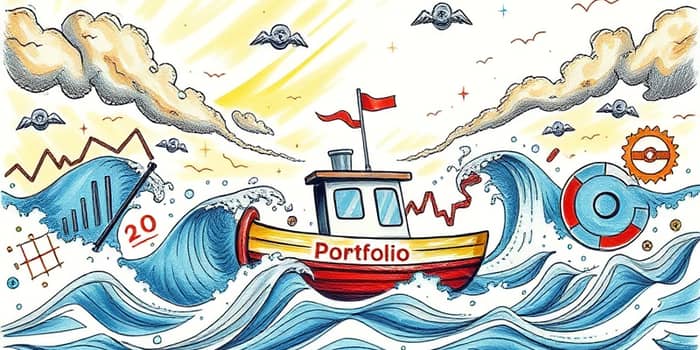
In today’s volatile markets, understanding how your investments behave under extreme conditions is critical. Stress testing offers a window into hidden vulnerabilities and helps you chart a path to resilience.
By simulating adverse scenarios—ranging from rate hikes to geopolitical shocks—you can identify portfolio weaknesses and build robust strategies that stand the test of turbulence.
Portfolio stress testing is the practice of simulating adverse market conditions to evaluate how an investment portfolio would perform under stress. These scenarios can include sharp market crashes, prolonged downturns, or sudden policy shifts.
The primary purpose of stress testing is to ensure robust investment strategies, manage risk proactively, and meet regulatory requirements for institutions. From retail investors to global funds, anyone with skin in the market benefits from this forward-looking approach.
There are multiple ways to stress test a portfolio. Each method provides unique insights into potential vulnerabilities and helps tailor your risk management framework.
Understanding each method’s strengths lets you craft a multi-layered defense against potential downturns and prepare for both likely and extreme events.
By following these steps systematically, you maintain continuous preparedness and ensure your portfolio adapts to new challenges.
Selecting a diverse set of scenarios helps capture a wide spectrum of risks. Focus on both historical events and imaginative extremes to stress-test your assumptions.
To process complex scenarios, investors use a mix of quantitative and econometric models:
Macro-econometric Models assess interactions between GDP, rates, inflation, and asset prices, delivering systemic stress insights that guide high-level strategy adjustments.
Multi-Factor Regression and factor models estimate each asset’s beta to key risks—equities, interest rates, commodities—helping quantify sensitivity under different conditions.
Simulation platforms range from simple Excel spreadsheets for retail investors to advanced Python, R environments or enterprise-grade risk suites for large institutions.
After running tests, the critical phase is transforming insights into action. Identify the scenarios that produce the largest drawdowns and examine which assets drive losses.
These adjustments foster disciplined investment behavior, preventing panic during volatile markets and aligning actions with long-term goals.
Adopt quarterly or semi-annual stress tests under normal conditions, increasing frequency when volatility spikes. Always document assumptions, data sources, and model limitations to maintain transparency.
Regular reviews ensure that evolving risks—such as rising inflation or new geopolitical tensions—are incorporated. Collaborative sessions between portfolio managers, risk officers, and analysts deepen understanding and reinforce ownership of risk controls.
Key metrics include Potential Drawdown, VaR estimates, and Liquidity Shortfall projections. For example, a 99% VaR of $120,000 on a $1 million portfolio quantifies the maximum expected loss during a severe crash.
Portfolio stress testing also satisfies regulatory mandates for banks and funds, while providing private investors with a structured process to anticipate and withstand market turmoil. It transforms uncertainty into actionable intelligence.
Stress testing is not a one-time exercise but an ongoing discipline that sharpens your portfolio against the unexpected. By simulating past crises and forward-looking shocks, you reveal vulnerabilities before they become losses.
Armed with robust scenarios, analytical rigor, and clear governance, you can navigate any downturn with confidence. Embrace stress testing as an integral part of your investment ethos—and turn market adversity into opportunity.
References













